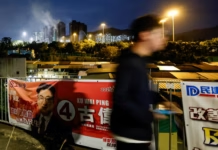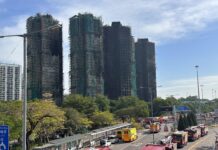In struggle against brutal Assad regime, working class must oppose sectarianism and imperialist intervention
Niall Mulholland, CWI
The killing of 108 people near the Syrian town of Houla shocked and appalled people everywhere. Particularly abhorrent was the cold-blooded murder of 49 children, many of them shot at close range. The sectarian tensions fuelled by this barbaric act raise the terrible spectre of a slide towards broader conflict and all-out civil war. As always, working people and the poor will suffer the most.
For 15 months, mass protests against the 40-year dictatorial rule of the Assad family have taken place in many parts of Syria. Initially they were part of the ‘Arab Spring’. However, in the absence of an independent working class movement leading the struggle, and with the increasing intervention by reactionary regimes like Qatar and Saudi Arabia, as well as imperialist meddling, the Syrian conflict is increasingly taking on the character of a civil war with mounting sectarian overtones.
Western powers, particularly the US, Britain and France, were quick to condemn the Houla atrocity. They put full blame on the Syrian regime of President Bashar al-Assad, who denies all responsibility. Certainly many eyewitnesses and survivors accuse Syrian armed forces and the Shabiha gangs, which routinely carry out killings and abductions of oppositionists, for the Houla slaughter. UN investigators say there are indications that the Shabiha carried out at least some of the killings on 25 and 26 May.
Yet the words of the imperialist powers are deeply hypocritical and sickening. Hundreds of thousands of civilian lives were lost in Iraq and continue to be lost in Afghanistan due to Western invasion and occupation. In imperialism’s quest for power, influence and access to resources, controlled pilotless aircraft attacks take place daily in Pakistan, Somalia and Yemen. The day following the Houla massacre, a Nato drone strike in eastern Afghanistan blew to pieces eight members of one family.
Like the brutal Assad regime, the Western powers justify using overwhelming military force by claiming they are attacking “terrorist” targets. In both cases, these state-sanctioned indiscriminate attacks amount to summary executions and potential war crimes.
Around 15,000 people have died in Syria, reportedly mainly at the hands of the Syrian army and pro-Assad forces, since the uprising began in March 2011. Under Obama’s administration, over 500 civilians were blown up in air strikes in Pakistan alone, 175 of them children.
Loggerheads
The US, backing the Syrian opposition, and Russia, backing the Assad regime, are increasingly at loggerheads over the worsening situation in Syria. This is reflected in disputes on the UN Security Council over how to deal with Syria.
Russia and China have voted against US-, British- and French-sponsored anti-Assad resolutions. Despite the rhetoric, the US and Russia positions have nothing to do with the plight of the Syrian people. It is all to do with the interests of their respective ruling classes and those of their closest allies.
The US, Britain and France make it clear that they want to see the end of Assad’s regime. They have long regarded it as a troublesome obstacle to their imperialist interests in the region. In its place, they want to see a pliant, pro-Western administration. Following last year’s revolutionary overthrow of two key Western allies in the region, Ben Ali and Hosni Mubarak, the imperialist powers are also determined to ensure the popular revolt in Syria does not go beyond ‘acceptable’ boundaries (i.e. towards an independent class position) and that it is channelled to their advantage.
The US is using the failure of the Kofi Annan ‘peace plan’ to threaten taking action “outside of the Annan plan” and the authority of the UN Security Council, with the support of its closest allies in the Syrian conflict, Britain and France. This echoes the infamous ‘coalition of the willing’ led by George Bush and Tony Blair that illegally invaded Iraq.
Russia, on the other hand, regards Assad’s regime as a crucial ally in the region, which allows it access to a Mediterranean naval port. The Russian foreign minister indicated that he may be prepared to pursue a so-called ‘Yemeni solution’, entailing Assad being removed from power while much of the structure of his government would remain in place.
This is modelled on an Arab League plan that saw Yemeni president, Ali Abdullah Saleh, step down from power earlier this year, after months of mass opposition protests.
However, the Kremlin is resolutely opposed to any Western military intervention, particularly after the bitter experience of last year’s Libyan conflict. Russia supported a UN Security Council ‘no-fly zone’ resolution. But the Western powers used the resolution to authorise armed Nato intervention in Libya, diverting the revolution, overthrowing Colonel Gaddafi’s regime, on their terms, and installing a pro-Western regime.
Nato
Assad shows no signs of stepping down soon or of facing an imminent internal coup. Although Syria is hit by trade sanctions, a significant part of its population, including many Sunni business people, has not yet broken decisively with the regime. Damascus also gambles on the West being unable to make a direct Libya-style military intervention.
The British foreign minister, William Hague, recently threatened that no option is ruled out in dealing with Assad, raising the prospect of Western military action against Syria. But last year’s Nato attacks in Libya cannot be simply replayed in Syria, a country with a much larger population and with state forces that military experts say are more powerful and better trained and equipped.
Assad has at his disposal an army of 295,000, plus 300,000 active reservists. Last year, Nato was able to fly thousands of missions over Libya at will, firing missiles with little or no retaliation. But Syria has over 80 fighter aircraft, 240 ground attack aircraft, attack helicopters and over 4,000 surface-to-air missiles, as part of an air defence system. A land invasion would require “monumental effort”, Western military strategists admit. Western troops would face being intractably bogged down in large and hostile urban areas.
The various proposals to aid the opposition and to weaken the Syrian regime, short of a direct military offensive – ‘humanitarian corridors’, ‘no-kill fly zones’, ‘safe areas’ and ‘no flying zones’ – all require offensive military operations.
So-called ‘civilian havens’ would have to be secured, almost certainly requiring ground troops, and then defended from attack, requiring air power. British defence strategists admit that any military action against Syria would “almost inevitably lead to more bitter and bloody civil war”.
Furthermore, Syria’s complex sectarian make-up – a Sunni majority alongside Christian, Alawite, Druze, Shia, Kurdish and other minority ethnic or religious groups – means that a Western military intervention could trigger a conflagration in a region with many sectarian and ethnic fault lines.
Even without direct Western military intervention, Syria continues to slide towards ‘Lebanese-style civil war’. This is aided and abetted by the direct involvement of local right-wing regimes and world powers which support either the opposition or the regime.
The region’s reactionary Sunni Arab powers, led by Saudi Arabia and Qatar, are using the Syrian crisis to bolster their position against Shia regimes. With US and Israeli backing, the Sunni regimes are confronting Iran, Syria’s most important ally in the region.
Turkey, Saudi Arabia, Qatar and other Gulf States, each of which pursue their own agenda, are reportedly funnelling money and arms to the opposition in Syria, with tacit US support. A cross border base operates from Turkey. Armed opposition forces claimed they killed 80 Syrian army troops last weekend. At the same time, a senior commander of the Iranian Revolutionary Guards admitted last week that Iranian forces are operating in the country in support of Assad.
Patrick Cockburn, the veteran Middle East journalist, wrote that armed rebels “could probably start a campaign of bombings and selective assassinations in Damascus” (Independent on Sunday, 03/06/12). The Assad regime would retaliate with more savage ‘collective punishments’. Damascus would be “the victim of the same sort of hatred, fear and destruction that have convulsed Beirut, Baghdad and Belfast over the past 50 years.”
Sectarianism is deepening. The minority Christians fear the same fate as their co-religionists in Iraq, who were ‘ethnically cleansed’ after the 2003 US-led invasion. The Assad regime exploits and fans these fears to maintain a base of support from among the Christian minority, as well as the Alawites, Druze and Kurds. The US, Britain, France, and Saudi Arabia along with other regional Sunni allies, also shamelessly use the sectarian card to sponsor ‘regime change’ in Damascus and as part of their campaign against Iran and its allies. All this has potentially very dangerous consequences for the people of neighbouring countries and throughout the region.
The Syrian conflict has already spread to bordering Lebanon, where the Assad regime has support from Hezbollah, which is part of the coalition government. Fighting between Sunni and pro-Assad Alawites in the northern Lebanese city of Tripoli left 15 people killed over the weekend. In recent weeks, the fighting dangerously spread to Beirut, raising fears of generalised sectarian conflict re-erupting in Lebanon.
The working class of Syria and the region must firmly reject all forms of sectarianism and any imperialist intervention or interference.
Intervention
The March 2011 uprising in Syria began as a genuine, popular movement against Assad’s police state, the erosion of social welfare, high levels of poverty and unemployment, and the rule of the rich, corrupt elite.
In the absence of a strong, united working-class movement with an independent programme, the courageous mass street protests appear to have been largely sidelined and overwhelmed by an array of fractious, armed opposition groups. While many Syrians remain committed to revolutionary change and resist sectarian provocations, increasingly the leaders of these forces are influenced by reactionary regional regimes and imperialism.
Islamist fighters from Iraq’s Anbar province, Libya and elsewhere have reportedly joined the assorted Syrian armed opposition. A large car bomb attack in Damascus that killed scores of people in May is widely blamed on opposition fighters linked to al-Qaida.
The Syrian National Council (SNC), an exiled opposition group, demands a UN Security Council resolution authorising “the use of force” against Assad, paving the way for Libya-style Nato intervention.
While many Syrian people face a desperate situation and some may genuinely hope outside military intervention can help, the Libyan events show that Nato involvement does not bring peace and stability. The number of deaths spiked after Nato began its air attacks over Libya, by an estimated factor of 10 to 15. The war-ruined country today is dominated by hundreds of competing militias running fiefdoms.
Around 150 died in tribal fighting in southern Libya in March and last weekend a militia temporarily took over the country’s main airport. The country’s supposed central administration – the unelected, Western-imposed, National Transitional Council – runs its own notorious militia, the 70,000-strong Supreme Security Committee. No doubt the bourgeois, pro-imperialist opposition leaders in Syria seek to be delivered to power, in a similar fashion, by Western military might.
Revolutions
However, the threat of imperialist intervention in Syria and the increasing involvement of the reactionary Saudi and Qatari regimes are no reasons to support the Assad regime. For socialists the alternative was displayed during last year’s revolutions in Tunisia and Egypt, as well as the early promise of the 2011 Syrian revolt.
They showed that it is the mass united movement of working people and youth that can remove despots and their regimes and fight for real social and political change. The resurgent revolutionary movement in Egypt, following the unjust outcome of the trial of Mubarak and his henchmen, underlines that only thorough-going mass action by the working class and youth can bring about real change.
The working people of Syria, from whatever religious or ethnic background, have the right to defend themselves from Assad’s state machine and all sectarian militias. Socialists call for the immediate formation of independent and democratically elected and controlled workers’ defence committees, to defend street protests, neighbourhoods and workplaces.
This needs to be linked to working people taking the initiative once again in Syria, building committees of action in all communities and workplaces, as the basis for an independent workers’ movement.
One of its tasks would be to independently investigate those responsible for the Houla slaughter and all other massacres and sectarian killings. This would also expose the full role of the Assad regime and its proxy militias, as well as the regional and imperialist powers.
As elsewhere, the United Nations is incapable, because of its subservience to the world’s major powers, of preventing atrocities against civilians or resolving armed conflicts in the interests of working people.
Following the Houla massacre, “mourning” strikes hit parts of Syria. Street protests against Assad continue in some cities, including parts of Damascus. It is vital that all such protests adopt an anti-sectarian, pro-working-class character. A united workers’ movement in Syria would develop workers’ protests, workplace occupations and strikes, including general strikes, to cut across sectarianism and to struggle for the overthrow of the Assad regime. A class appeal to poor rank-and-file soldiers to organise against the army tops, to form trade unions and to join the protesters, could split and neutralise the murderous state forces.
Syrian workers from all religious and ethnic backgrounds need a party of their own, with independent socialist policies. Such a party with mass support can successfully resist sectarianism and the poisonous ‘divide and rule’ policies of Assad, the regional right-wing Sunni and Shia-based regimes and hypocritical imperialism.
A socialist programme – calling for workers’ democratic control and management of the economy to transform living conditions, create jobs with a living wage and free quality education, health and housing – would inspire workers and youth to join the side of the revolution.
Under a genuine socialist banner, as distinct from those so-called ‘socialist’ forces supporting Assad, the popular revolt against the Syrian regime would appeal to workers in the region to spread the revolution.
By linking up the ongoing revolutionary movements in Syria, Tunisia, Egypt and elsewhere throughout North Africa and the Middle East with a socialist programme for fundamental change, the working class could kick out the tyrants and inflict mighty blows to the region’s decrepit capitalism and interfering imperialism. This would carry over into a struggle for a voluntary and equal socialist confederation of the Middle East, in which the rights of all minorities would be guaranteed.



